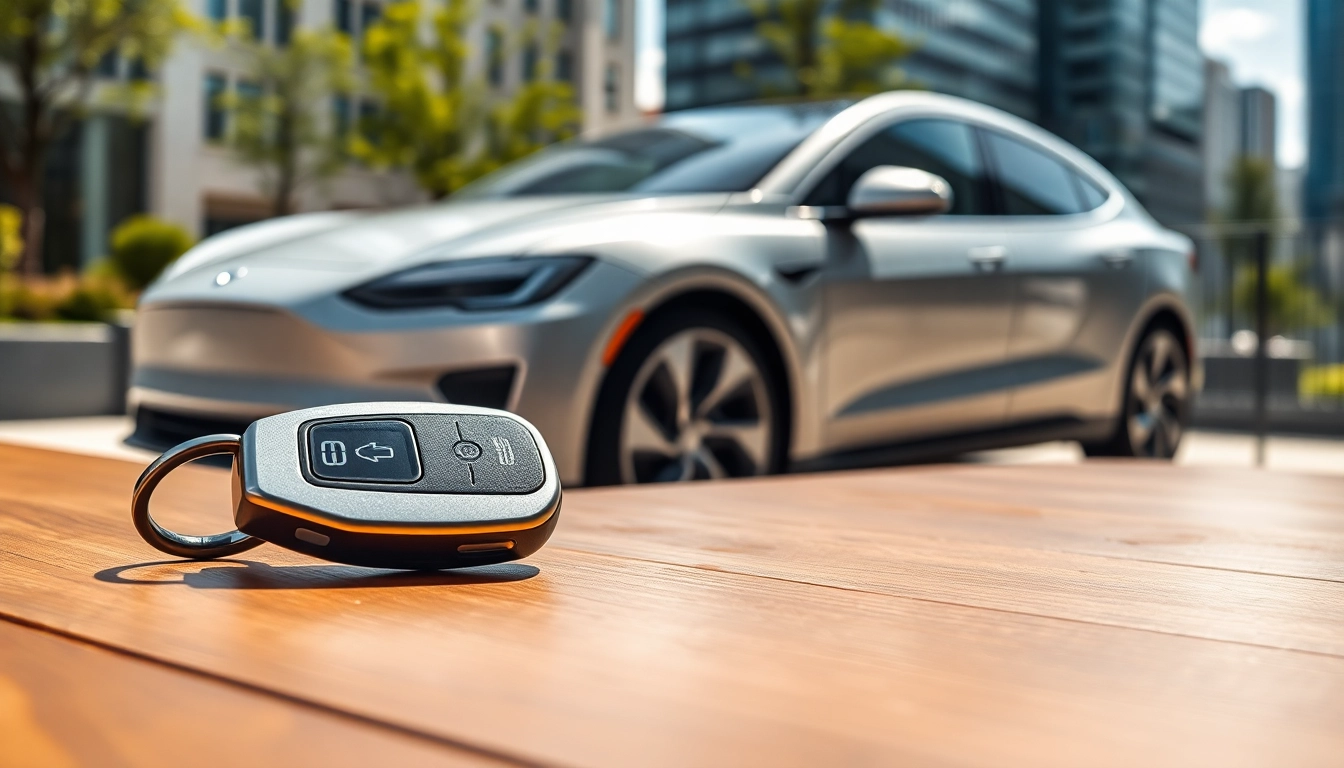Understanding Keys for Electric Cars
As electric vehicles (EVs) permeate the automotive landscape, the technology surrounding them becomes increasingly sophisticated. One of the integral components of this technology is the key system—specifically, the Keys for electric cars. These keys not only serve the basic function of starting and unlocking the vehicle but also incorporate advanced features and functionalities tailored to enhance the driving experience. In this article, we will delve deeply into the evolution, types, and technology of keys for electric cars, highlighting their benefits and addressing common misconceptions.
The Evolution of Car Keys
The history of car keys traces back to the early 1900s, with mechanical keys being the standard for automobile access and ignition. As automotive technology advanced, keys began to include various forms of security features such as locks and bolts. By the late 20th century, remote keyless entry systems emerged, followed by the introduction of transponder keys that featured embedded chips to enhance security. With the rise of electric vehicles in the 21st century, the concept of the car key evolved once more, leading to the development of digital keys and smart access systems.
Types of Keys for Electric Cars
Today, several key types are associated with electric vehicles, each offering distinct advantages:
- Traditional Keys: These are similar to mechanical keys and may be employed in some electric vehicles. They provide basic access and ignition capabilities.
- Key Fobs: Key fobs are remote devices that allow drivers to unlock and start their vehicles from a distance. Many modern EVs utilize key fobs equipped with additional functionalities like trunk release and panic buttons.
- Smart Keys: Also known as proximity keys, smart keys allow for keyless entry and ignition. They enable the driver to unlock and start the car just by being in proximity to the vehicle, offering enhanced convenience.
- Digital Keys: Digital keys use smartphone applications for locking, unlocking, and starting vehicles. They represent the forefront of technology in the automotive market, enabling greater integration with smart devices.
How Electric Car Key Technology Works
The technology driving electric car keys blends several advanced systems to ensure both security and convenience. Key fobs and smart keys generally operate using Radio Frequency Identification (RFID) technology, which communicates wirelessly with the vehicle’s onboard systems when in proximity. In digital keys, the integration of Bluetooth technology and smartphone applications allows drivers to manage their vehicles via their mobile devices.
Moreover, many electric vehicles today can receive over-the-air (OTA) updates, meaning that key functionalities can evolve over time, enhancing both security measures and user experience.
Benefits of Using Digital Keys for Electric Cars
Convenience and Accessibility
Digital keys exemplify convenience; they allow users to unlock and start their vehicles without physically handling a key. This is particularly useful for those who may have their hands full. Additionally, digital keys can be shared via smartphone apps, enabling users to grant access to others without needing a physical key. This flexibility is advantageous for families, car-sharing services, or multiple drivers sharing a vehicle.
Enhanced Security Features
Digital keys often incorporate advanced security features that enhance the protection of the vehicle. For instance, they may require biometric authentication, such as fingerprint recognition, to enable access. Furthermore, because they operate through encrypted communication, digital keys make it significantly harder for unauthorized access compared to traditional keys.
Innovative mechanisms, such as rolling codes and two-factor authentication, also add layers of security, reducing the likelihood of theft.
Integration with Smart Devices
With the rapid proliferation of smart technology, the ability to sync vehicle keys with other smart devices is a game-changer. Digital keys can interact seamlessly with smartphones, smartwatches, and even smart home systems. This integration means that vehicle status updates, access notifications, and even location tracking become accessible through the same devices that manage other areas of a user’s digital life.
Common Misconceptions About Keys for Electric Cars
Digital Keys vs. Traditional Keys
A prevalent misconception is that digital keys are less reliable than traditional keys. In reality, many digital key systems have been rigorously tested to ensure they provide reliable access and ignition functionality. While traditional keys are vulnerable to being lost or duplicated, digital keys can often be deactivated if misplaced, enhancing overall security.
Reliability and Performance Concerns
Some users may express concerns over the reliance on technology for key access, fearing that software glitches could lock them out of their vehicles. Modern key systems are designed with redundancy and fail-safe mechanisms to mitigate these issues. For example, most digital keys come with backup methods, such as a physical key or temporary access codes that can be generated through a mobile app.
Compatibility with Various Electric Car Models
It’s a common belief that digital keys are exclusive to certain models or manufacturers. However, a growing number of electric vehicle models across various brands now feature compatibility with digital key technology. As the automotive industry advances, this technology will likely become the norm rather than the exception, leading to wider accessibility across different vehicle manufacturers.
How to Choose the Right Key for Your Electric Car
Evaluating Key Features
When selecting the right key for your electric car, consider your specific needs and preferences. Key features to evaluate include:
- Accessibility: Determine if you prefer the hands-free operation provided by smart keys or the simplicity of a traditional key.
- Security Features: Look for keys with advanced security options, such as encryption and biometric authentication.
- Integration: Consider how well the key system integrates with your smartphone and other smart devices.
Consulting User Reviews and Experiences
Consumer feedback can be a valuable resource in assessing the performance and reliability of key systems. Search for reviews and testimonials from other electric vehicle owners to gather insights on their experiences with specific key types. This information can aid you in selecting a key system that aligns with your needs.
Assessing Cost and Value
Pricing for keys can vary based on the technology and features they offer. Evaluate the overall value based on the key’s convenience, security, and technological benefits. While cheaper options may seem appealing, it’s essential to balance cost with resilience and innovative capabilities to ensure that you make a worthwhile investment.
Future Trends in Electric Car Key Technology
Advancements in Keyless Entry Systems
The future trajectory of electric car key technology suggests a continued move towards more sophisticated keyless entry systems. Advancements in biometrics and AI are likely to enhance user access while improving security against unauthorized use. Expect to see innovations like facial recognition and gesture-based access becoming mainstream.
The Role of AI and Machine Learning
Artificial intelligence and machine learning are poised to play critical roles in the development of intelligent key systems. By analyzing patterns and user behavior, these technologies can create adaptive systems that learn preferences, optimizing access and functionality continually. For example, these systems could preemptively unlock the vehicle as the driver approaches, offering an even smoother experience.
Potential Environmental Benefits
As societies become more focused on sustainability, future electric car key technologies will also likely incorporate environmentally friendly practices. The use of materials for key fobs and smart devices could evolve to utilize recyclable resources, reducing waste. Additionally, advancements in energy efficiency for these keys will align with broader goals of reducing carbon footprints across automotive technology.



